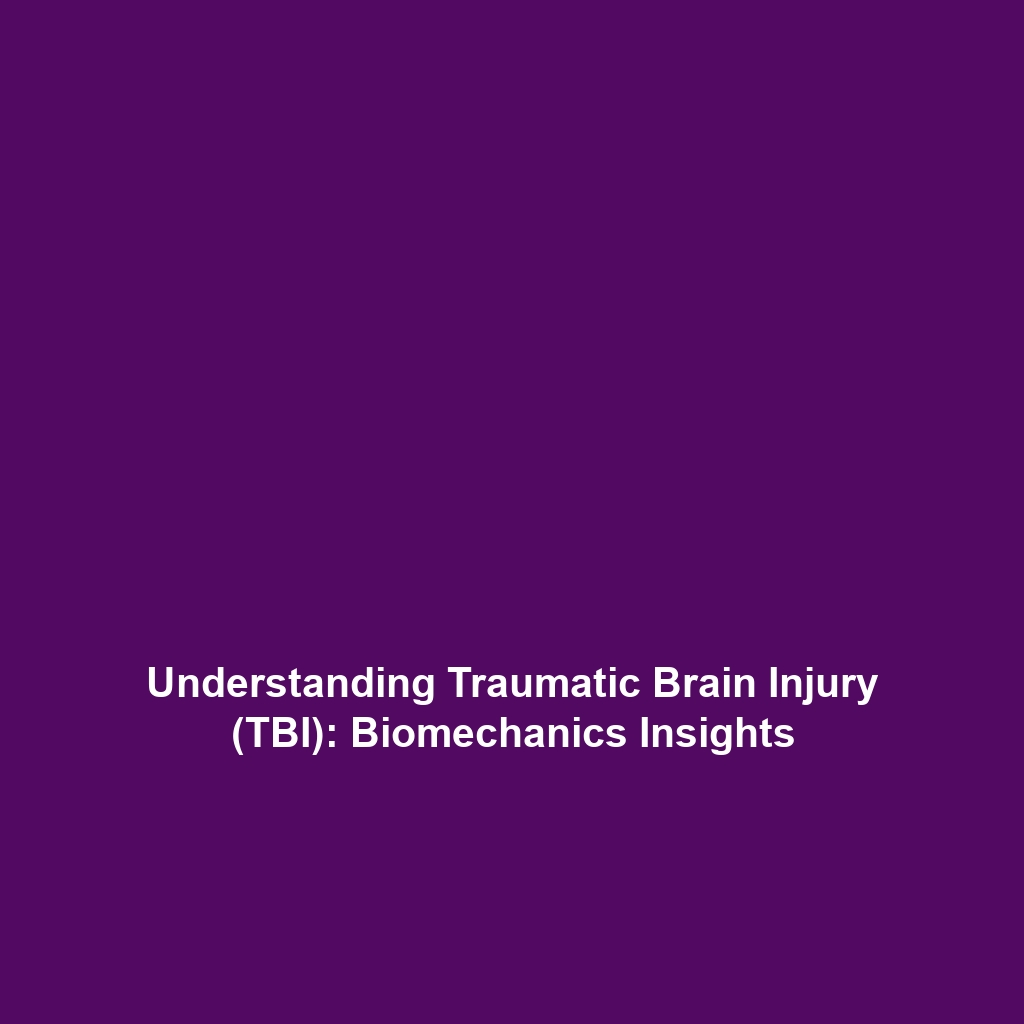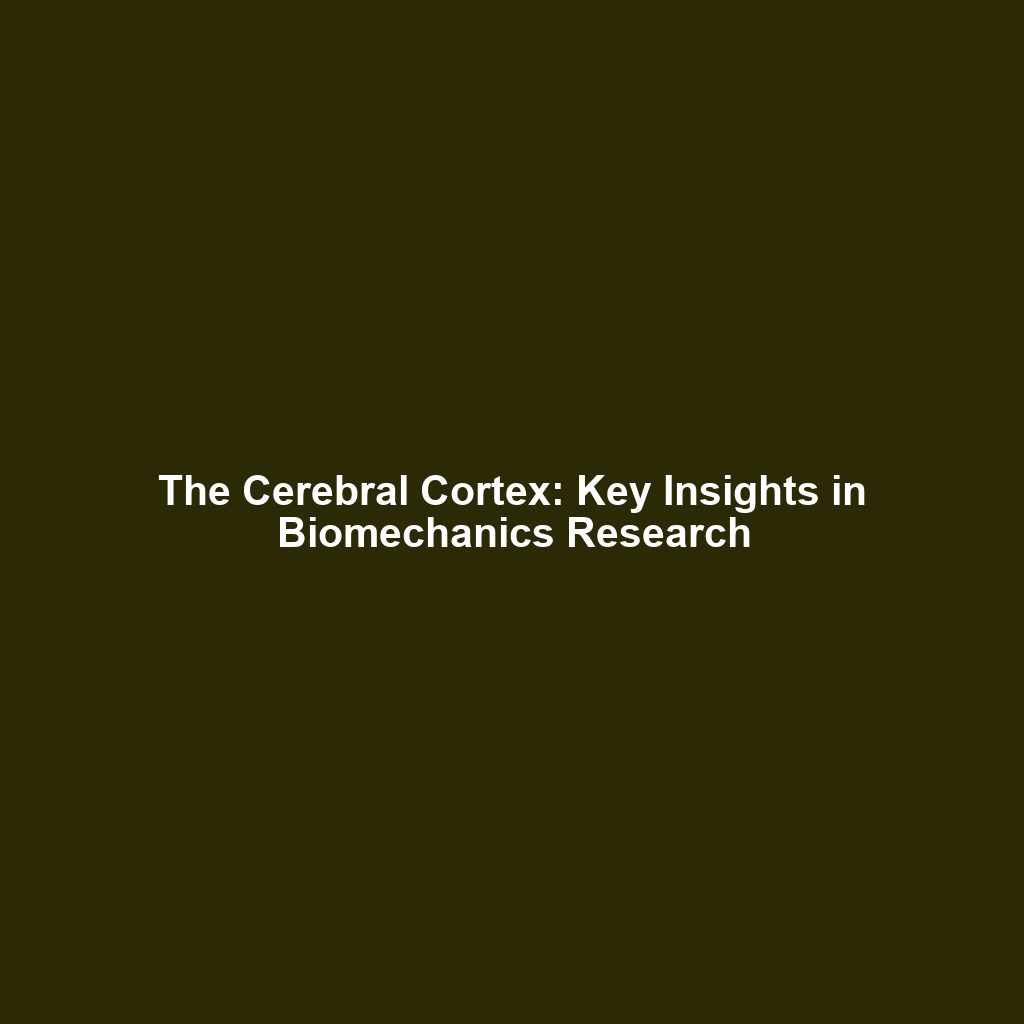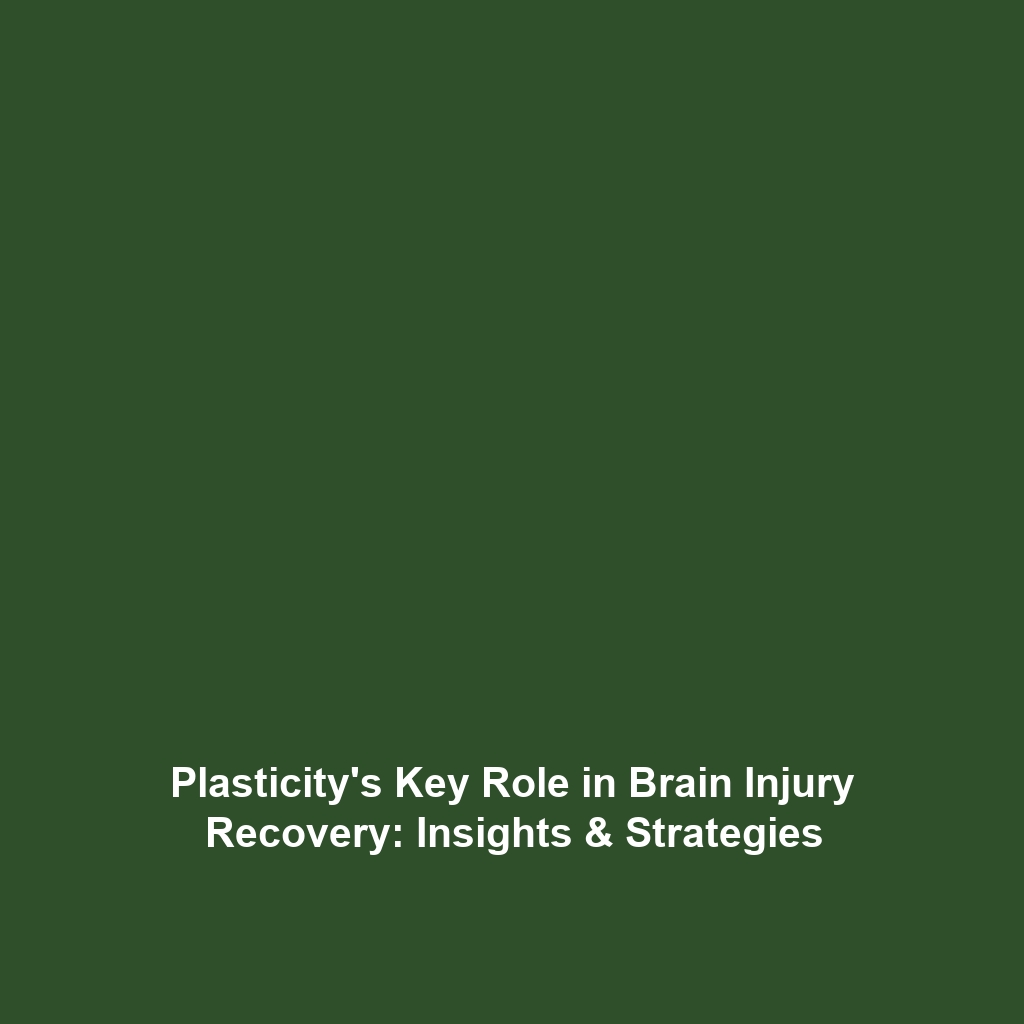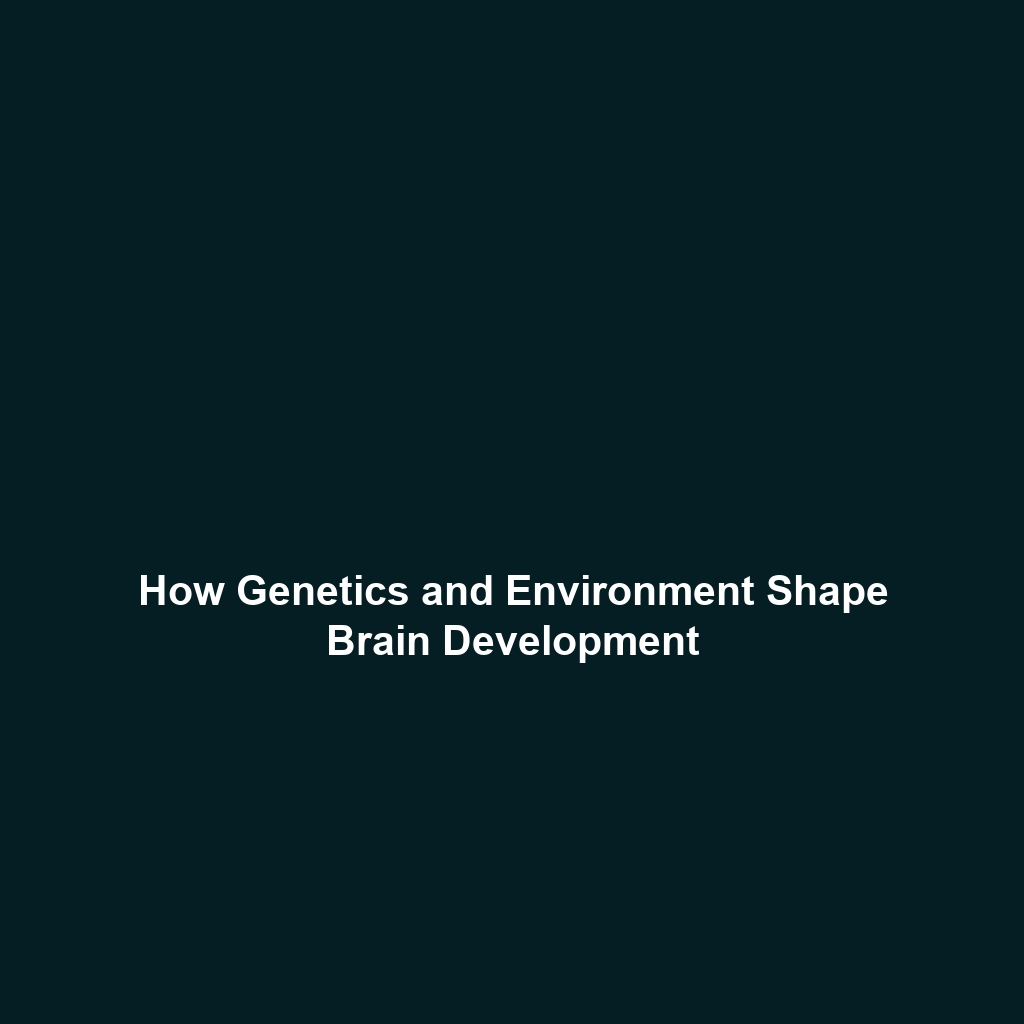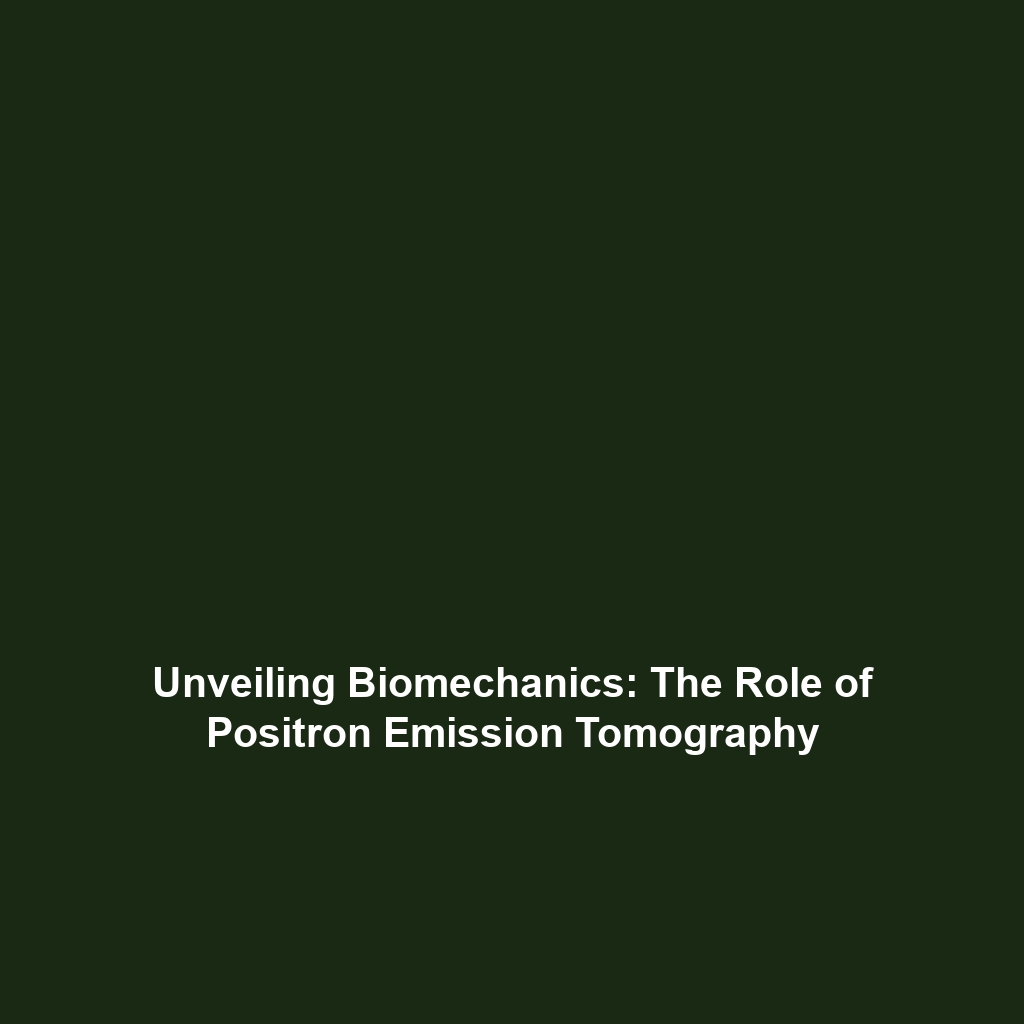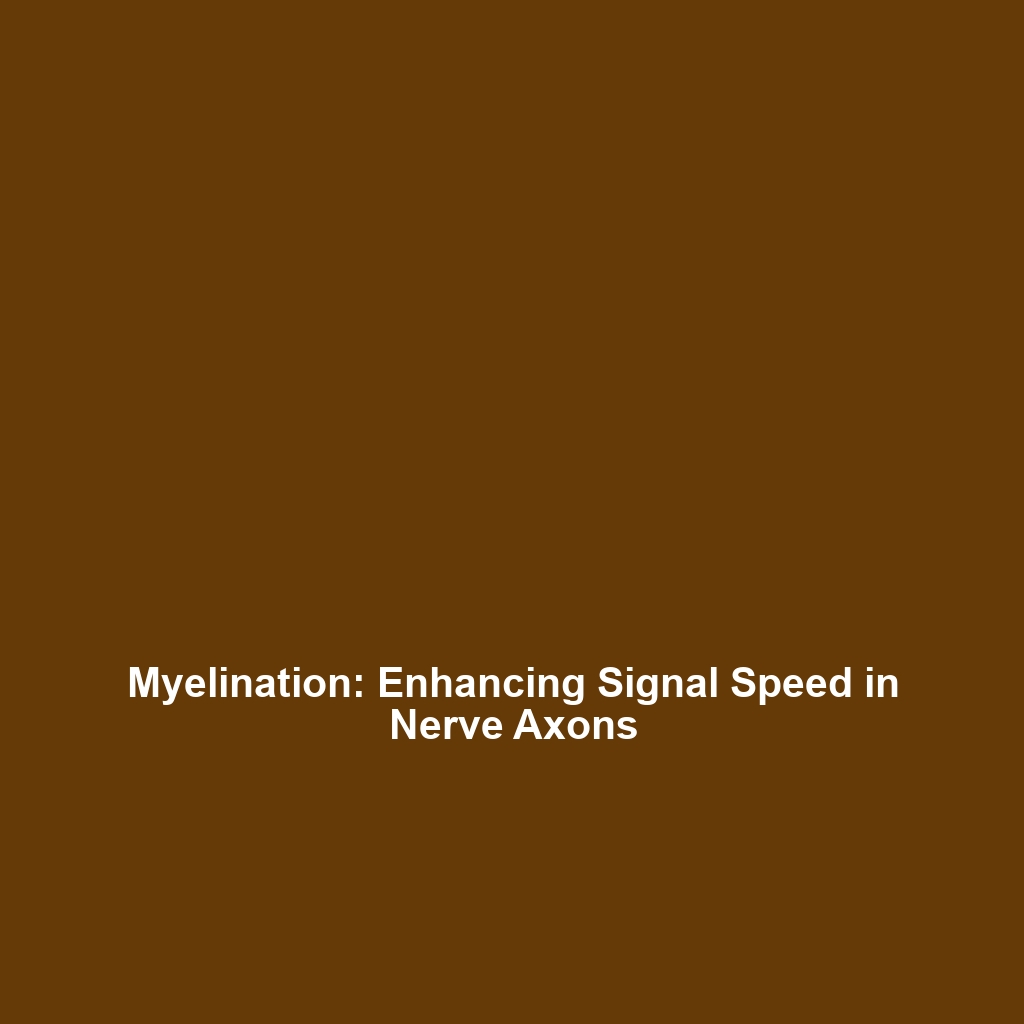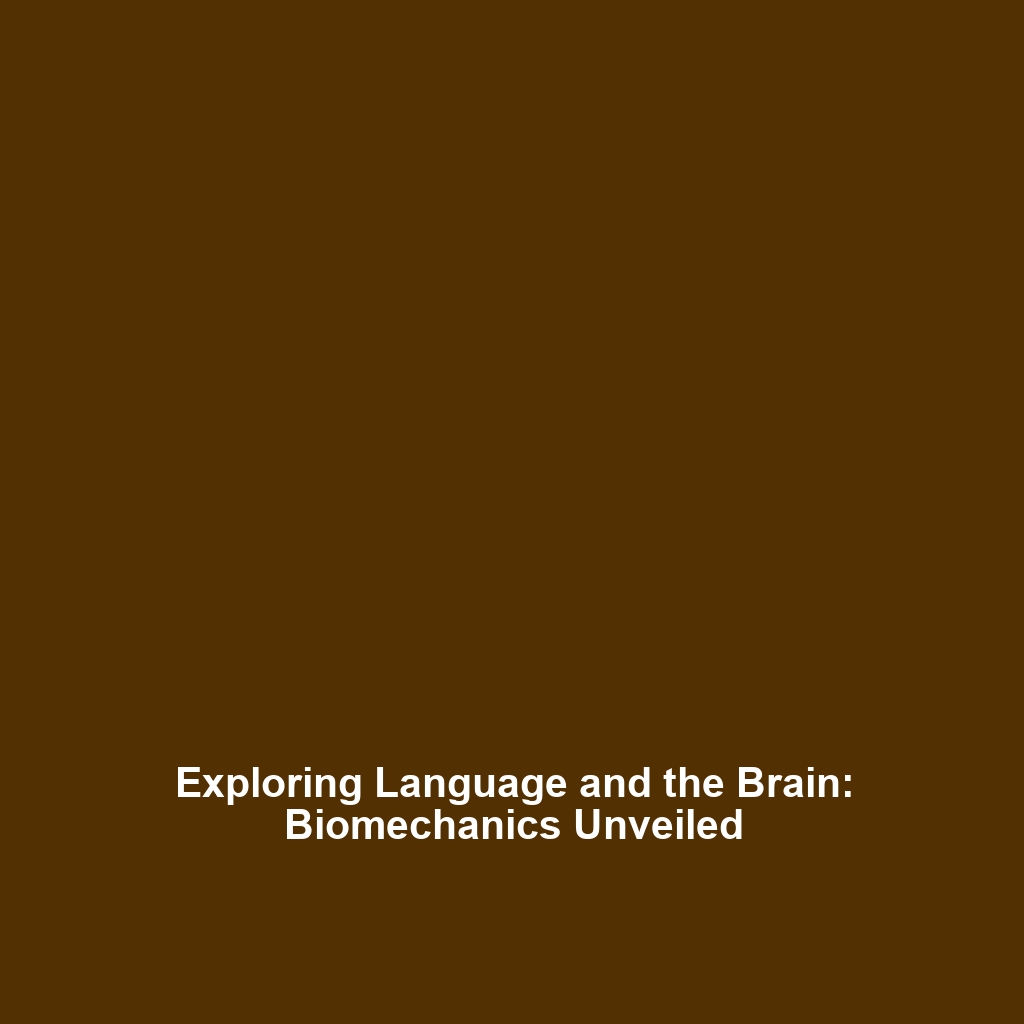Understanding Traumatic Brain Injury (TBI) in Biomechanics
Introduction:
Traumatic Brain Injury (TBI) is a significant neurological condition that results from external mechanical forces impacting the head. It poses critical challenges not only for individual patients but also extends to public health concerns. Within the context of biomechanics, TBI encompasses the study of how mechanical forces can cause injury to brain tissues, influencing both recovery and rehabilitation. This article delves into the intricate relationship between biomechanics and traumatic brain injuries, highlighting key concepts, real-world applications, current challenges, and future research based on innovative solutions.
Key Concepts of Traumatic Brain Injury (TBI)
Understanding TBI requires a grasp of several important biomechanical concepts, including:
- Mechanisms of Injury: TBI often occurs due to direct impact, acceleration-deceleration forces, or blasts, resulting in deformation of brain tissue.
- Types of TBI: Classifications include concussions, contusions, penetrating injuries, and diffuse axonal injuries.
- Biomechanical Assessment: Evaluating the forces involved can help predict the severity of the injury and inform treatment protocols.
The intersection of TBI and biomechanics is vital for improving our understanding and treatment of brain injuries.
Applications and Real-World Uses
The role of biomechanics in addressing TBI extends to various applications that enhance prevention, diagnosis, and rehabilitation of patients. Some significant uses include:
- Impact Sensors: Devices used in sports to monitor collisions and potential concussions in athletes.
- Rehabilitation Robotics: Assistive robots designed to help patients regain functionality after a TBI.
- Preventive Gear: The development of advanced helmets and protective headgear informed by biomechanical studies.
These applications underscore how TBI is used in biomechanics to enhance safety and recovery outcomes in various fields.
Current Challenges
Despite significant advancements, several challenges of TBI remain in biomechanics:
- Inconsistencies in injury assessment methods.
- Lack of awareness regarding long-term effects on cognitive functions.
- Challenges in developing universally effective treatment protocols.
- Variability in individual responses to rehabilitative strategies.
These issues in biomechanics call for ongoing research to improve methodologies and outcomes.
Future Research and Innovations
The frontiers of TBI research reveal promising innovations that are shaping the future of biomechanics:
- Advanced Imaging Techniques: Innovations in MRI and CT scanning that provide deeper insights into brain injuries.
- Neuro-protective Therapies: Research into pharmacological agents that can mitigate damage post-injury.
- Smart Materials in Headgear: Development of materials that adaptively respond to forces, improving protective equipment.
These breakthroughs are pivotal in pioneering new approaches in treating Traumatic Brain Injury (TBI) and enhancing recovery methods in biomechanics.
Conclusion
In conclusion, Traumatic Brain Injury (TBI) represents a critical focus in biomechanics, emphasizing the necessity for comprehensive understanding and innovative approaches. The synthesis of knowledge and technology holds potential for substantial improvements in prevention, treatment, and recovery. For further exploration, consider diving into related topics such as neurological rehabilitation or impact biomechanics. Together, these discussions will enhance our capacity to address the complex challenge that TBI poses to individuals and society.
